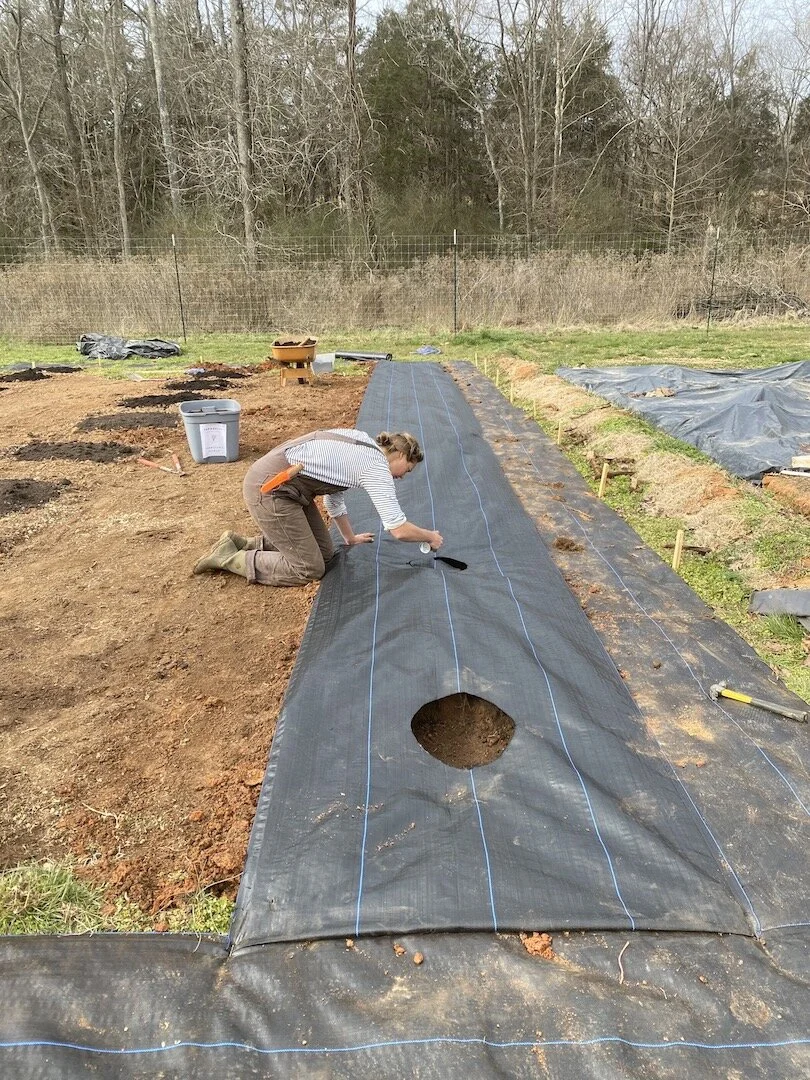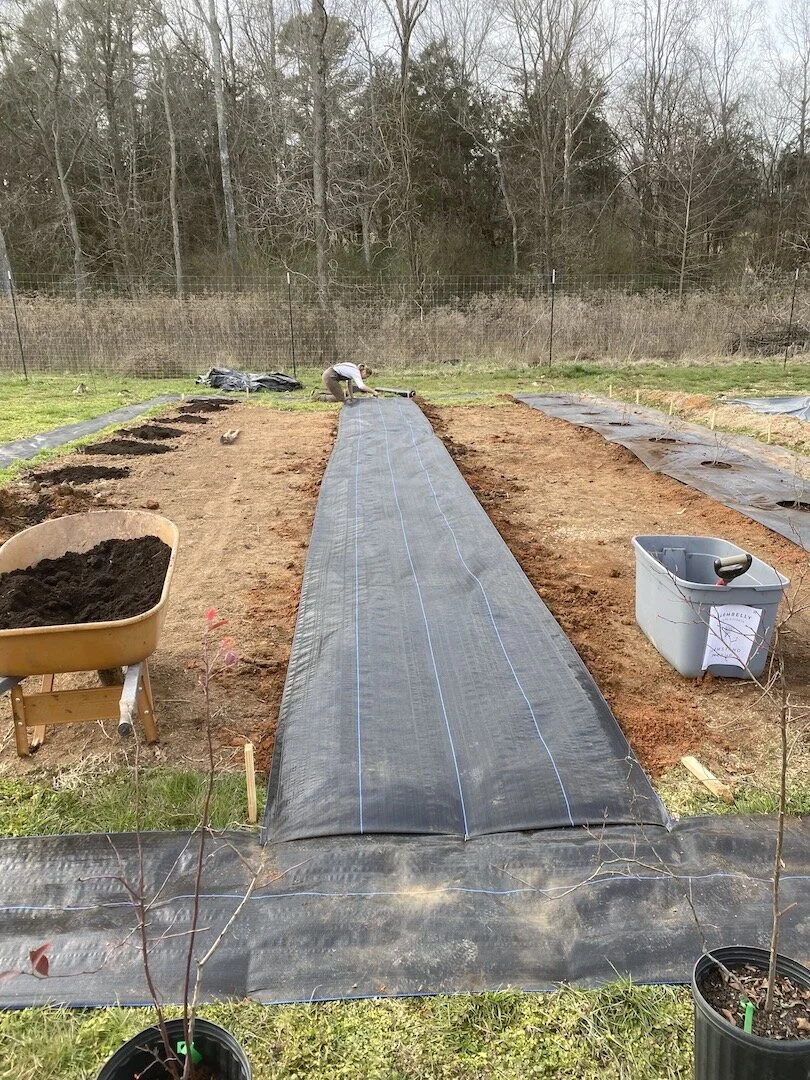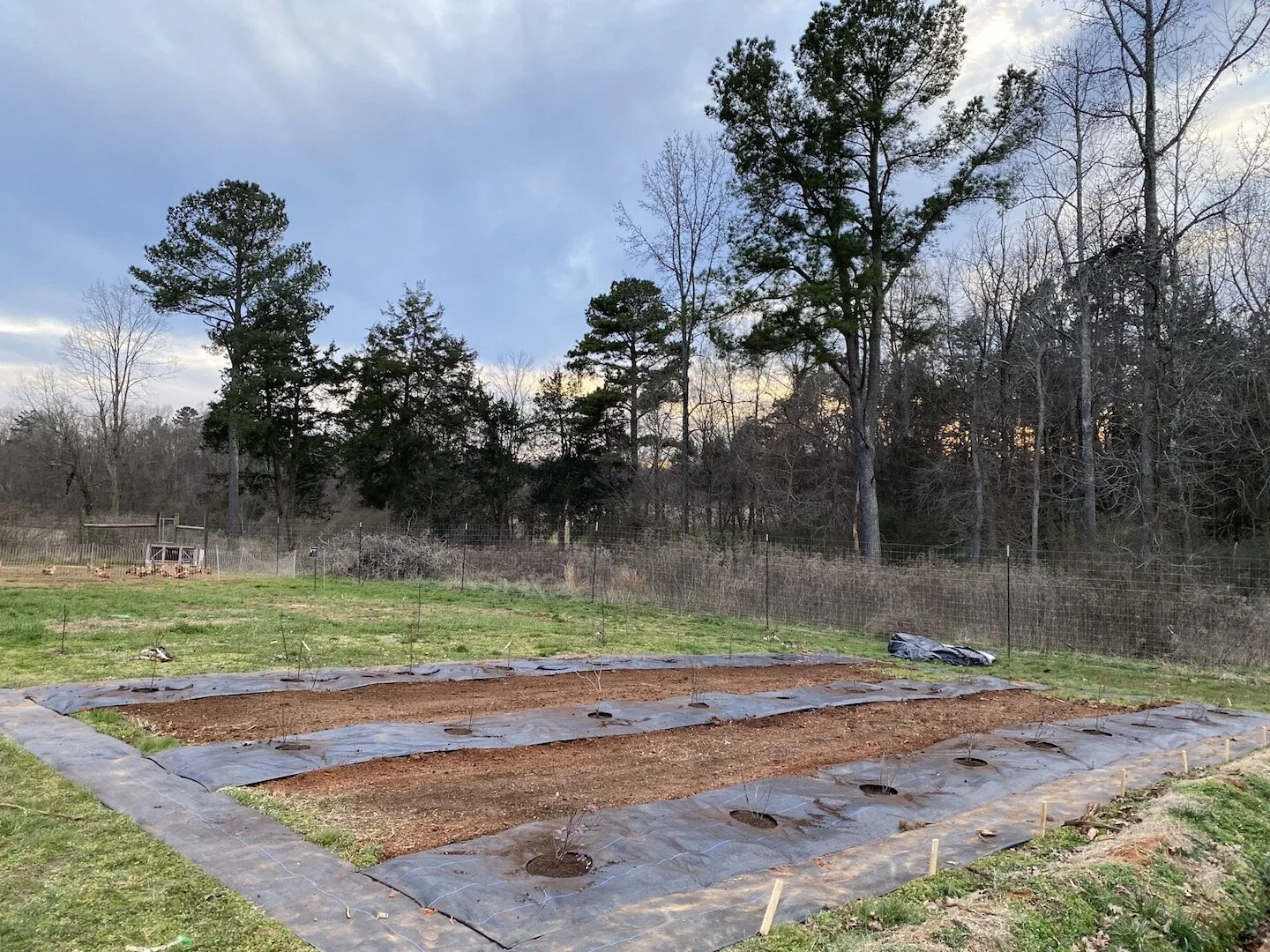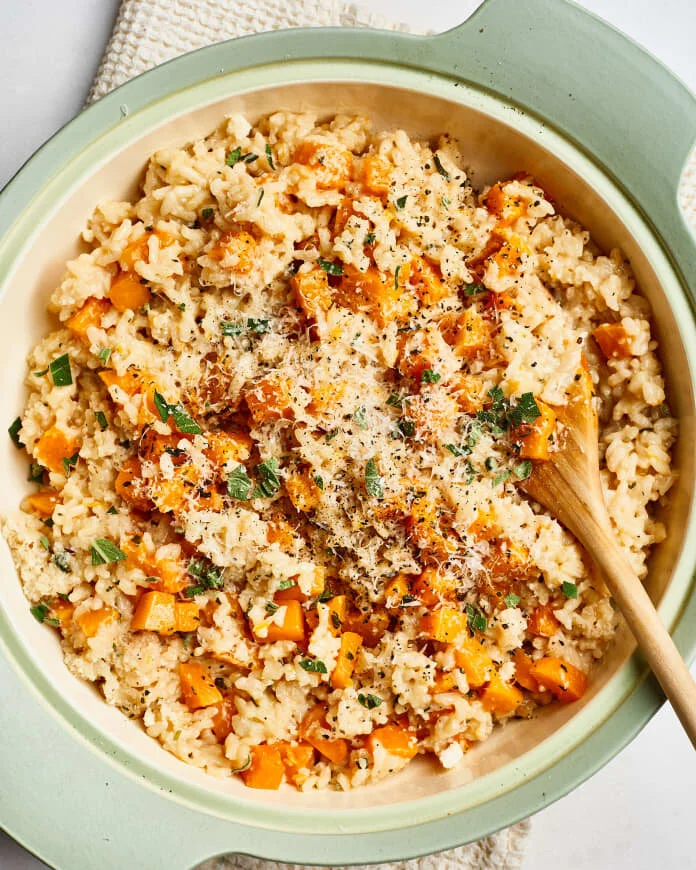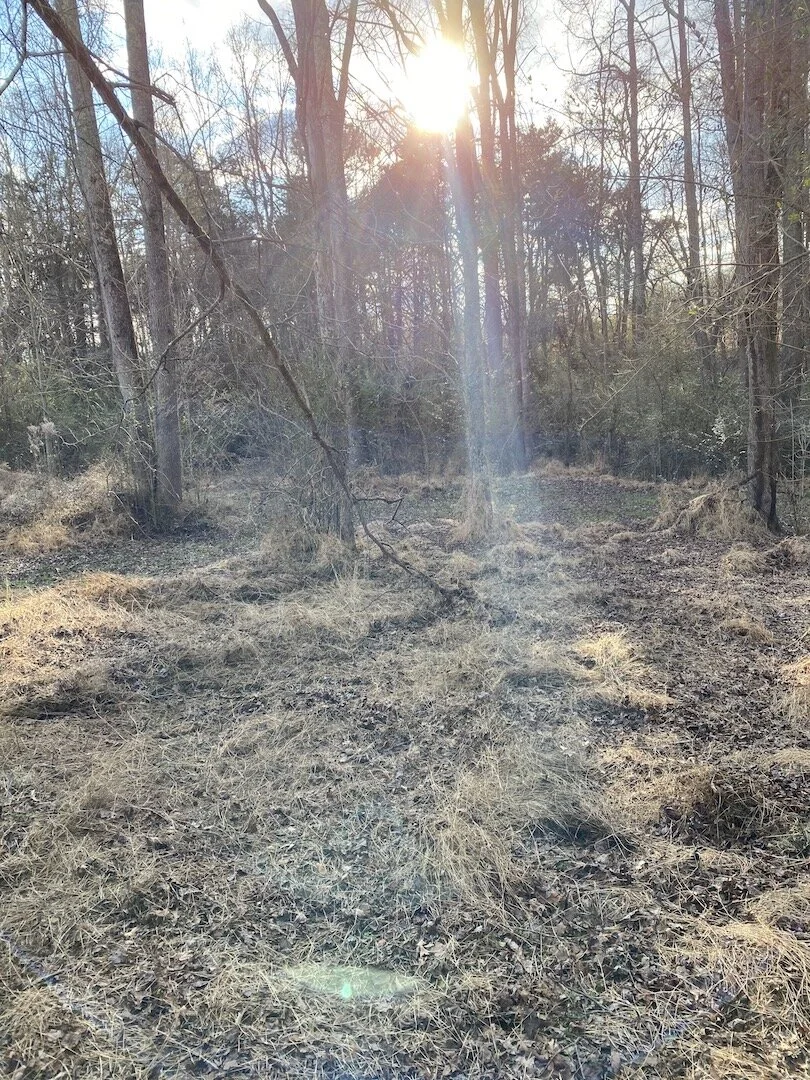FARM NOTES
Alright y’all, the blueberries are officially (finally) in the ground! It was a long day, and every muscle in my body is aching, but hot dang it we got it done. As I’ve mentioned in earlier entries, this is my first time really working with blueberries, so I did a lot of research and asked a lot of questions to make sure I didn’t f*ck it up. And so, hopefully any of you who would like to plant blueberries in the near future (whether it’s just one bush or a whole field of them) will find this info useful… keep scrolling for photos + explanations for how it all went down:
First things first, you gotta dig some holes. Each hole was (roughly) 18” deep and 2 feet wide. Next, we refilled each hole about halfway (so 9-10”) with 1/3 compost, 1/3 peat moss (to lower the pH in the soil), and 1/3 native soil (that was displaced when we dug the hole).
Holes dug 18” deep and 2 ft wide.
Each hole refilled halfway up with 1/3 compost, 1/3 peat moss, 1/3 native soil
Next, we laid down a 4 ft wide strip of landscape fabric and stapled it down at the ends of the row. We decided to plant the blueberries into landscape fabric to help with weed/grass suppression (and I know I’m going to be thanking myself come July when alllllll the weeds are growing like crazy), but you could certainly skip this step. Then we took a handheld torch (like this one.. just $16! But don’t forget to buy some butane too) and burned and 1.5 foot wide holes in the fabric directly above where each hole was dug.
After that, it’s time to plant! We gently removed the blueberries from their pots and set them into the hole, reaching under the fabric to push back the displaced soil and refill any gaps, making sure to press everything in tightly. We also mulched around the top of each plant with an additional scoop of compost and peat moss, and then gave them a good drink of water with the hose. To finish off the row, we used 6” landscape staples to secure the long sides of the fabric down.
Burning holes into the landscape fabric.
Time to plant!
With the first row down, we got to do it all over again… twice! Lucky us. ;)
A note that we planted 9 blueberries in each row, spaced 5 ft apart (so each row is ~45 ft long). There is 10 ft in between each of the rows, to allow ample space to harvest from the bushes as they get older/bigger.
Starting on Row #2.
(Almost) finished!
The final step that we didn’t quite finish today is laying down additional strips of landscape fabric in the pathways in between the rows. Once the fabric is stapled down, we will put down a nice layer of pine bark mulch – which is much nicer to look at than a bunch of landscape fabric, and will also help cut down on weed pressure.
Well friends, there you have it, blueberry planting 101. Got questions? Leave ‘em in the comments!
KITCHEN NOTES
I’m really sure what got into me, but after a long day in the dirt I decided it was a good idea to whip up some butternut squash risotto for dinner, and dang it was SO GOOD. I’ll admit that when I usually think about making risotto, I assume it’s going to be a giant pain (ie lots of standing over a pot and constantly stirring) and I end up making something else. And sometimes, you just want a warm, creamy, salty bowl of risotto, ya know? So, while there was a good amount of stirring involved, I surprised myself with how quickly it all came together. I didn’t really use a specific recipe, but found this straightforward one from The Kitchn, which I’ve shared below in case any of y’all have a hankering for b-nut risotto now…
BUTTERNUT SQUASH RISOTTO
Photo via The Kitchn.
Ingredients
8 cups low-sodium chicken or vegetable broth
3 tablespoons butter, divided
1 medium butternut squash (about 2 1/2 pounds), peeled and cut into 1/2-inch pieces (about 4 cups)
1 1/2 tablespoons chopped fresh sage leaves
1 teaspoon kosher salt, divided
1/2 teaspoon freshly ground black pepper, divided
1 large shallot (or white/yellow onion), finely chopped
2 cups arborio rice
1/2 cup dry white wine
1 cup finely grated Parmesan cheese (about 2 ounces), plus more for serving
Instructions
Place the broth in a medium saucepan over low heat and keep it at a very low simmer.
Melt 1 tablespoon of butter over medium heat in a large, high-sided sauté pan or Dutch oven. Add the butternut squash, sage, 1/2 teaspoon of the salt, and 1/4 teaspoon of the pepper, and cook until the squash is lightly caramelized and tender, 10 to 12 minutes. Transfer the squash to a plate and set aside.
Melt another 1 tablespoon of butter in the pan. Add the shallots (or onions) and sauté until fragrant and beginning to soften, about 4 minutes.
Add the rice and cook, stirring until the edges have turned translucent but the center is still opaque, about 2 minutes. Add the wine and simmer, stirring constantly, until the wine has completely reduced and the pan is nearly dry, about 3 minutes.
Begin incrementally adding the broth one ladle at a time, stirring constantly. Wait until the liquid has been almost completely absorbed by the rice before adding another ladle. After about 12 minutes, stir in the remaining 1/2 teaspoon salt and 1/4 teaspoon pepper and begin tasting the rice to gauge how far it has cooked.
Continue adding broth until the rice is al dente (still has a bit of chew), the broth is creamy, and the dish has the consistency of thick porridge, 20 to 30 minutes total (you might not use up all of the broth). If you run your spatula through the risotto, the risotto should flow slowly to fill in the space.
Remove the pan from the heat. Stir in the reserved squash, Parmesan, and remaining 1 tablespoon butter until melted. Taste and season with salt as needed. Serve immediately, garnishing each bowl with additional Parmesan cheese.
TODAY’S STATS
Low temp: 30F
High temp: 55F
Sunrise: 7:25am
Sunset: 5:33pm
Moon phase: Waxing Gibbous
Additional notes: Cold and cloudy in the AM, turning to blue skies in the afternoon.



